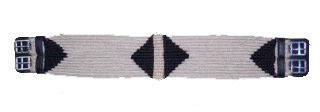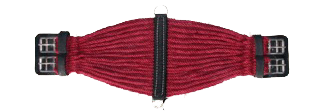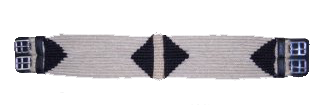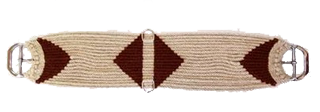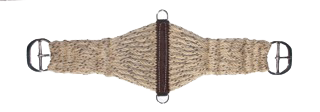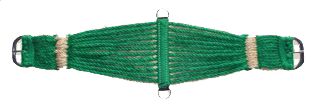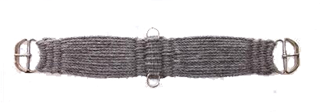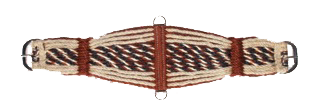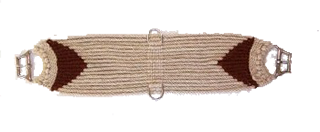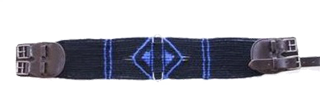Do you accept other payment methods besides PayPal?
Yes, Cheque and money orders can be accepted by arrangement, please Contact Us for more details.
Do you make customised/one off orders?
Yes, please Contact Us for more details.
What are “Safes”?
“safes” or Chafes as they are sometimes called refer to a leather (I only use high quality leather) cover that goes behind the buckles on the english and western cinches/girths. The “safes” are designed to protect the horse’s skin and to distribute the pressure from the buckles more evenly so that no high pressure points develop – thus reducing the risk of bruising, galling and discomfort. Safes do have to be cared for – saddle soap and a light oiling to keep them clean and supple.
Safes are only useful if the buckles will be below the saddle flap (usually on english style saddles) or you have a sensitive horse. English style girths tend to have more issues with buckle pressure as there are multiple small pressure points (two buckles per side) With western cinches some people use them some don’t, it is personal preference. The western buckles that I use are the flattest I can get and seem to spread the pressure well without safes.
Safes can be added to a cinch or girth at a later point if a problem around the buckle area develops.
Why Mohair?
Mohair comes from the Angora goat, originally bred and raised in ancient Ankara city Turkey. This is where the name Angora comes from. In Turkey it was a closely guarded animal until the 16th centaury when export was allowed first to Spain and France then the rest of the world.
The distinctive properties of mohair, giving soft luxurious handle combined with great durability, make it desirable for use in quality products from clothing to furnishings. With its affinity for dyes, mohair reproduces colours that have an unmatched clarity.
Mohair Properties
Durability - Mohair can be twisted and bent without damage to the fibre; it is the most durable of animal fibres.
Comfort - Mohair does not irritate the skin, even for people who are sensitive to wool. Or skin of horses.
Strength - Mohair is stronger than steel of the same diameter.
Shrink resistance - Mohair fabrics shrink much less than wool because mohair's smooth fibres do not felt.
Elasticity - Mohair is very elastic; it can be stretched up to 30%, and will spring back to shape; mohair garments resist wrinkling, stretching, or sagging.
Moisture transfer - Mohair easily absorbs and releases moisture, moving perspiration away from the skin. It is comfortable to wear in cold and hot weather. This ability to “breath” makes it excellent for girths and cinches as it helps to keep the horse comfortable during long periods of exercise.
Lightweight - Mohair's smooth fibres can be made into fabrics that have a cooling effect. It is ideal for summer garments.
Non-flammability - Mohair will not burn unless it is exposed to a direct flame. When removed from the flam mohair stops burning. This was one of the factors that lead to it being the fabric of choice for the original Teddy Bears.
Easy to Wash - Mohair does not felt or shrink. Rinsing gently in cold water is usually sufficient to clean the mohair cord. If you feel it must be washed gentle hand washing with a wool wash has been found to be the easiest and safest method.
Dust and dirt are easily shaken or brushed off; bacteria and thence smells cannot become trapped in the smooth scales.
Insulating - Mohair's hollow fibres do not conduct heat like wool and provides good insulation, even when wet.
Lustre - One of mohair's most important qualities is its ability to take dye and to display brilliant colours that resist fading by time or hard wear.

 +61 0414 224 430
+61 0414 224 430
